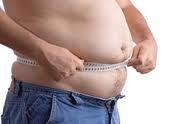This blog discusses
Being Healthy in America Today
This is another segment of The
Right Body in the Wrong Time - we continue the discussion of making
Behavior Changes and why it is so
difficult.
In the previous posts, (see archive) we went through the first four steps in the decision making process that leads to
permanent change,
precontemplation, contemplation, planning and action.
This was the easy part!
Now, after all this
self-education and awareness, we put ourselves to the test of steps
five and
six,
Maintenance and Permanent Process.
Many of us get to this point;
now, you're going to see what it takes to
make it your way of life!
This is where we
want to be!
ON CRUISE CONTROL!!!
we can start and stop when we want, resume or even accelerate, and best of all COAST!
If it were only this easy! Just think,
never worrying about what you're eating,
never weighing yourself,
not keeping volumes of charts and exercise schedules or calorie counting......why,
everybody would look good
and be healthy!
Just like these settings in your car's system, maintenance and
permanent process allow
you to do just that. The
good habits become so ingrained, that they become second nature. You are so intellectually committed, you know that if you
don't do this, your health will
fail!
Maintenance- This is achieved best incrementally!
Earlier, I described a typical all-or nothing approach. The kind I had tried.
It usually fails.
After all, the idea is to feel good, NOT miserable! Also important, is making progress that turns into habit.
How do you do that?
Set attainable goals, write them down and refer to them, and chart your progress.
A real-life example that worked for one of my clients.
After the example we'll go through the elements that made it work.
(If you haven't read the previous posts in this series, The Right Body in the Wrong Time, now would be a good time to do so.)
This person was morbidly obese ( BMI 40). She had diabetes and metabolic syndrome.
Docs are now calling this diabesity.
I talked with her. Just listening is one of the most important things a trainer can do, btw.
She was worried and depressed; she had tried so many things and nothing had worked.
She was at the point where she knew if something wasn't done, a health crisis was imminent!
She said she lived in a second floor apartment; and, at the end of the day, climbing those stairs was really hard.
BEFORE any commitment by her, or formal training by me, I made a simple suggestion:
"When you climb those stairs, as you get to the top, step back and do one more. You can do that, right?"
She thought for a second, and said, " Well, yeah, I guess I could do one more."
"OK. Put up a piece of paper on the door, count those steps as you climb, each time write down how many you climb, and add one more each day," I told her.
"After two weeks, add them all up and you'll be surprised at how much extra exercise you got."
Off she went, looking determined, I thought.
A couple of weeks or so later, I saw her again.
After only two weeks, there was a noticeable weight loss in her face.
Even I was surprised! She was excited, and I was eager to have her tell me what happened.
She had lost seven pounds.
She was climbing more stairs than the original goal.
She was going for short walks.
She even changed her habit of going straight to the refrigerator when she entered the apartment.
NOW she had a chance of making the changes required to live her life instead of just existing! At this point, training by a professional would increase her chances of reaching Permanent Process, but is not absolutely necessary, because the criteria for sustainable change are being met.
They are:
1. Motivation-This person knew, as mentioned in previous posts, that a health calamity was near.
2. A simple initial task - that the person agreed she could do.
3. Keeping a record- right on the door at the top of the stairs, pretty hard to ignore!
4. Progression-incremental increase is easier. (inch by inch, life's a cinch-yard by yard, life is hard)
5. A sense of accomplishment-she's keeping the record and seeing her steps increase every day.
6. Control- The feeling of helplessness and being unable to deal with issues disappears.
The BONUS effect-there are often unexpected positive events that occur in the process, a cascade of good things that further motivate the person to continue to improve. She started taking extra walks and stopped eating as soon as she got home.
In this case, the previous behavior was to eat as soon as she got in the door. The heightened awareness and sense of accomplishment blunted that self- destructive desire and eventually eliminated it.
The HALO effect- When despair and depression are replaced with success, you feel so terrific, you can do anything! That's a good place to be!
The concept of ONE MORE-Getting in the habit of pushing yourself, just a little each time, pays big dividends.
At this point, a trainer can help her stay on track, give her support, info and resources to continue her self-education, and emphasize that only SHE can take charge of her health.
The trainer would make sure she did not focus on weight; that rate of loss ( 7 pounds in two weeks) would actually be unhealthy over time.
The
trainer would also explain body composition; and why it is a better indicator of progress.
Reminder! As mentioned before, if the steps mentioned in previous posts are followed, it's possible to do this yourself!
A lot of us like the extra support, knowledge and motivation a trainer can provide.
 That's OK too!
That's OK too!
This person has since moved to Mississippi, and we've lost touch, but I'm confident she has the motivation, strategies and behaviors in place to lead a healthy and fit life.
I said in the last post I would include a picture of how I look now.
In the first pic, I'm 60 years old.
Now, at age 71, I'm healthier and younger.
At University of North Florida, I was tested at age 69, and met the standards of fitness for a man
35 years old!
Folks, I have been there! Let me help you take control and make the journey to health and fitness!
The next post will be about Permanent Process-how to put the whole concept of health and fitness on CRUISE CONTROL and fahgeddabout it!


 Not bad for a 71 year old geezer!
Not bad for a 71 year old geezer!













































